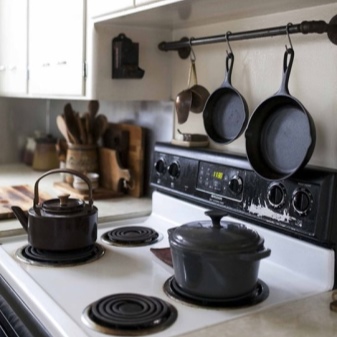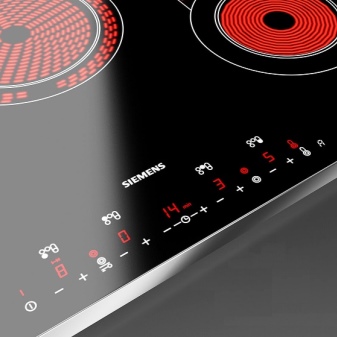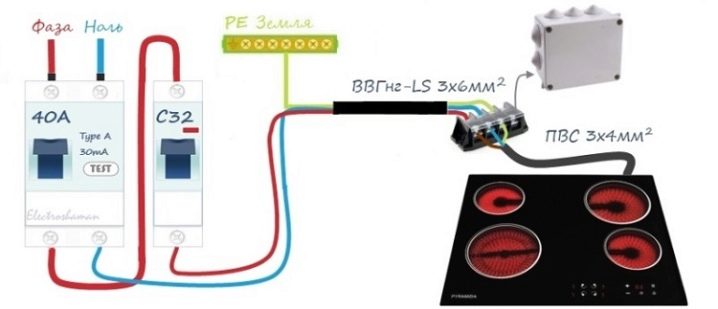Electric hob power

The power of electric hobs is the most important technical indicator, and in most cases it is the determining factor when purchasing an appliance. It is this parameter that determines the comfortable use of the panel and the speed of cooking.


Peculiarities
The final power of the hob is influenced by the number of cooking zones and their total performance. Most modern samples are produced with several wheels of different diameters, each of which has its own power. Any brewing circle has its own purpose, which is described in detail in the accompanying documentation. Electric panels have from 1 to 6 burners of various sizes, which makes it possible not to heat the air in vain and use dishes of “their own” diameter for each of them. Each of the hotplates is heated independently of the others, and is equipped with a switch that regulates the heat level.
Not only the speed of cooking depends on the power of the electric hob, but also such an important factor as energy consumption.... Thus, the power consumption of a high-power panel is much higher than that of a low-power appliance. And if earlier all standard electric stoves were produced with the same power indicator, then modern cooking electric panels allow you to choose a model taking into account not only personal preferences, but also the state of the electrical wiring.


Hotplate performance
Modern electric hobs have different capacities. Most devices have a power in the range from 3 to 10 kW, and it depends on the number of circles and their individual performance.
- In traditional appliances the smallest hotplate typically consumes between 0.4 and 1 kW of electrical energy per hour, and is designed for cooking in a small pot. On such a surface it is convenient to brew coffee, prepare meals for children or stew small portions of meat.
- Many modern designs equipped with fast heating circles. Most often they are called SuperQuick, Hi-Light or "express burners". They have the highest power, which, depending on the type of model, can vary from 1.5 to 3 kW. Such circles are intended for rapid heating of water in deep containers, cooking soup for a large family and frying large portions of meat.
- The next category of burners is represented by samples of average productivity and a power of 1.5 kW. As a rule, these are the most frequently used circles, which bear the bulk of the load. They are used for cooking, frying and stewing dishes for a family of 3-4 people.


After performing arithmetic calculations, you can see that the total power of a standard 4-burner hob with two medium power circles, one heavy-duty and one low-performance hob is 7 kW. The largest models, equipped with six burners, already have a higher power, reaching 10 kW. However, this indicator is only valid for panels of classical design. More advanced designs have an additional heating ring around the main disc. It is clear that this design increases the consumption of electricity, however, it allows you to expand the heating area and use larger dishes.
There are also models with combined burners.On such panels, it is very convenient to cook dishes in an oblong dish, such as a goose maker, a brazier or a cauldron. This allows you to stew whole fish or poultry without cutting into portions.


Double burners, equivalent to an increase in the heating area, also increase energy consumption, which can be calculated in a simple way by adding the parameters of each of the circles.
However, when calculating performance, it should be borne in mind that the total power of the cooker is more of an official technical value than an actual one. This is due to the fact that at home, situations when all six burners are simultaneously used are very rare. Usually, even on such super-powerful samples, two, maximum three burners are used at the same time. That's why In normal use, there is no particular difference in energy consumption between 3- and 6-burner hobs.


Criterias of choice
When choosing the power for the electric hob, there are a number of important points to consider. First of all, one should start from the state of intra-house electrical communications. For example, in older homes, the installation of a modern 6-burner hob can cause some problems. Worn out networks often do not withstand high loads and lead to emergency situations. For more accurate diagnostics and assessment of the condition of the general electrical wiring it is recommended that you bring in a professional electrician.


If it is not possible to use the services of a professional, then when self-assessing the possibilities of posting, it should be borne in mind that to power the hob, a cable with a cross-section of at least 4 mm2 is required. Ideally, there should be no wall outlets and the appliance should be connected directly to the mains.
If the building is too dilapidated and the electrical communications in it have not been updated for a long time, then it is better to opt for a panel with a capacity of no more than 3.5 kW.

In new houses with fresh and high-quality wiring, there are no special restrictions on the power of the device, and if you wish, you can install a panel with a maximum rating of 7-10 kW. However, it should be borne in mind that in addition to the hob, there are other household electrical appliances in the apartment, the power of which must also be taken into account. If this requirement is neglected, then it is possible to overload the network and constantly provoke an emergency operation of the machines. In the case when the decision to buy a powerful panel is still made, then you should at least try not to turn on other electrical appliances at the same time.
But, despite the great possibilities of powerful panels, their purchase is not always the best decision. In addition to high energy bills, the use of such models significantly increases the temperature in the room, which in the summer can result in additional costs for a constantly running air conditioner. That's why when choosing a high-performance sample, such nuances should be taken into account.


Very often, given the rather high cost of 1 kW of electricity, the most expedient is the acquisition of modern samples with a capacity of no more than 3.7 kW. These devices are designed to be plugged into a conventional wall outlet and do not require a separate power cable. It is worth noting that with a decrease in the total power of the model, the size of the working area does not decrease. These surfaces also have 4 burners, but of a lower power.


The only drawback of such samples is the increased time required for food preparation. The best choice would be models of average performance, with a capacity of 5-6.5 kW. They are the ideal balance of energy consumption and cooking speed, are available in a wide range, and for the most part have quite a comfortable price.
Thus, the choice of the power of the hob must be approached very reasonably, taking into account the possibilities of electrical wiring, personal preferences and the number of people in the family.

For information on how to choose the right hob, see the next video.











The comment was sent successfully.